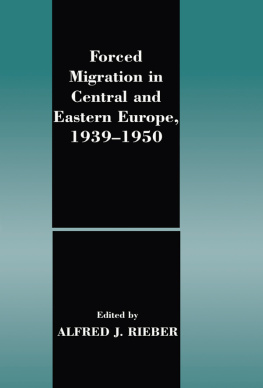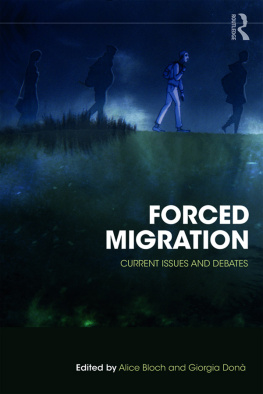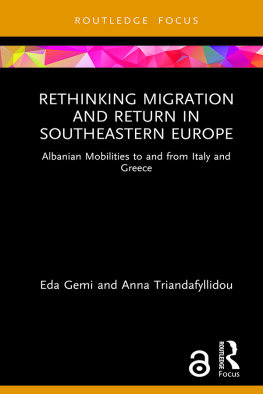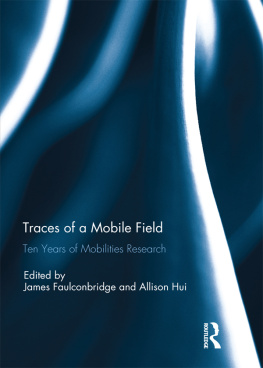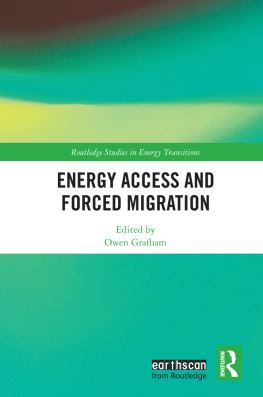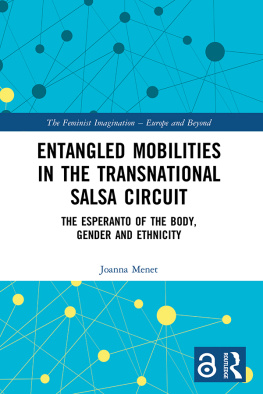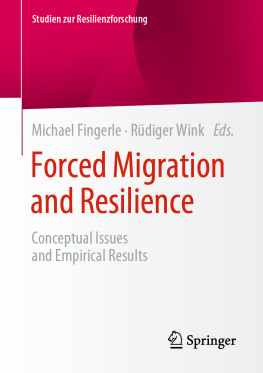Mobilities and Forced Migration
Whether precipitated by political or environmental factors, human displacement can be more fully understood by attending to the ways in which a set of bodily, material, imagined and virtual mobilities and immobilities interact to produce population movement. Very little work, however, has addressed the fertile middle ground between mobilities and forced migration. This book sets out the ways in which theories of mobilities can enrich forced migration studies as well as some of the insights into mobilities that forced migration research offers.
The book covers the challenges faced by both forced migrants and receiving authorities. It applies these challenges to regions such as the Middle East, South Asia and East Africa. In particular, the chapter on Iraq to Jordan forced migration tests the problematics of the concept of Pan-Arabism; the chapters on Bangladesh and Ethiopia deal with the more historically familiar variables of warfare and famine as drivers of forced migration.
This book will be of value to practitioners in the area of human rights and to scholars of racial and ethnic politics, human geography and globalization.
This book was published as a special issue of Mobilities.
Nick Gill is Senior Lecturer in Human Geography, Exeter University, UK.
Javier Caletro is a Researcher based at the Centre for Mobilities Research at Lancaster University, UK.
Victoria Mason is Lecturer in the School of Politics and International Relations at the Australian National University.
Mobilities and Forced Migration
Edited by
Nick Gill, Javier Caletro and Victoria Mason
First published 2014
by Routledge
2 Park Square, Milton Park, Abingdon, Oxon, OX14 4RN
Simultaneously published in the USA and Canada
by Routledge
711 Third Avenue, New York, NY 10017
Routledge is an imprint of the Taylor & Francis Group, an informa business
2014 Taylor & Francis
This book is a reproduction of Mobilities, vol. 6, issue 3. The Publisher requests to those authors who may be citing this book to state, also, the bibliographical details of the special issue on which the book was based.
All rights reserved. No part of this book may be reprinted or reproduced or utilised in any form or by any electronic, mechanical, or other means, now known or hereafter invented, including photocopying and recording, or in any information storage or retrieval system, without permission in writing from the publishers.
Trademark notice: Product or corporate names may be trademarks or registered trademarks, and are used only for identification and explanation without intent to infringe.
British Library Cataloguing in Publication Data
A catalogue record for this book is available from the British Library
ISBN 13: 978-0-415-85795-6
Typeset in Times New Roman
by Taylor & Francis Books
Publishers Note
The publisher would like to make readers aware that the chapters in this book may be referred to as articles as they are identical to the articles published in the special issue. The publisher accepts responsibility for any inconsistencies that may have arisen in the course of preparing this volume for print.
Contents
Nick Gill, Javier Caletro & Victoria Mason
Alison Mountz
Susan E. Zimmermann
Victoria Mason
Miriyam Aouragh
Nayanika Mookherjee
Laura Hammond
Brad K. Blitz
The chapters in this book were originally published in Mobilities, volume 6, issue 3 (September 2011). When citing this material, please use the original page numbering for each article, as follows:
Chapter 1
Introduction: Mobilities and Forced Migration
Nick Gill, Javier Caletro & Victoria Mason
Mobilities, volume 6, issue 3 (September 2011) pp. 301316
Chapter 2
Specters at the Port of Entry: Understanding State Mobilities through an Ontology of Exclusion
Alison Mountz
Mobilities, volume 6, issue 3 (September 2011) pp. 317334
Chapter 3
Reconsidering the Problem of Bogus Refugees with Socio-economic Motivations for Seeking Asylum
Susan E. Zimmermann
Mobilities, volume 6, issue 3 (September 2011) pp. 335352
Chapter 4
The Im/mobilities of Iraqi Refugees in Jordan: Pan-Arabism, Hospitality and the Figure of the Refugee
Victoria Mason
Mobilities, volume 6, issue 3 (September 2011) pp. 353374
Chapter 5
Confined Offline, Traversing Online Palestinian Mobility through the Prism of the Internet
Miriyam Aouragh
Mobilities, volume 6, issue 3 (September 2011) pp. 375398
Chapter 6
Mobilising Images: Encounters of Forced Migrants and the Bangladesh War of 1971
Nayanika Mookherjee
Mobilities, volume 6, issue 3 (September 2011) pp. 399414
Chapter 7
Governmentality in Motion: 25 Years of Ethiopias Experience of Famine and Migration Policy
Laura Hammond
Mobilities, volume 6, issue 3 (September 2011) pp. 415432
Chapter 8
Statelessness and Environmental-Induced Displacement: Future Scenarios of Deterritorialisation, Rescue and Recovery Examined
Brad K. Blitz
Mobilities, volume 6, issue 3 (September 2011) pp. 433450
Please direct any queries you may have about the citations to clsuk.permissions@cengage.com
NICK GILL, JAVIER CALETRO & VICTORIA MASON
ABSTRACT Whether precipitated by political or environmental factors, human displacement can be more fully understood by attending to the ways in which a set of bodily, material, imagined and virtual mobilities and immobilities interact to produce population movement. Very little work, however, has addressed the fertile middle ground between mobilities and forced migration. This article introduces the special issue by setting out the ways in which theories of mobilities can enrich forced migration studies as well as some of the insights into mobilities that forced migration research offers.
Introduction
In 2008, according to the United Nations High Commission for Refugees (UNHCR), there were over 42 million forcibly displaced people worldwide, excluding environmental refugees. There is continuing controversy over the number of environmental refugees that are likely to be produced by climate change, and attendant controversy over the most useful way to categorise this group, but the Stern Report (2006) quotes an estimate of 150 200 million by the middle of the century and some third sector organisations give much higher predictions (Conisbee & Simms, 2003; Christian Aid, 2007).
Mobility is inherent to our understanding of both political and environmental refugees. Displacement whether this leads to international movement and permanent resettlement or to short distance, repetitive, temporary movements involves the corporeal travel of migrants, the physical movement of objects such as clothing, keepsakes and identity documents, the imaginative travel of aspirations, longings and memories, and impacts powerfully on the virtual and communicative mobilities of those that move (Urry, 2007; Bscher & Urry, 2009). Displacement may involve not just the mobility of refugees but also of criminal gangs enabling border crossings, crisis relief personnel and infrastructure as well as media personnel and techniques for the retransmission of crises to global audiences. Moreover, the tragedy of human displacement may be triggered or amplified by the collapse of mobility systems whose rehabilitation often becomes a key priority of aid and development agencies.




